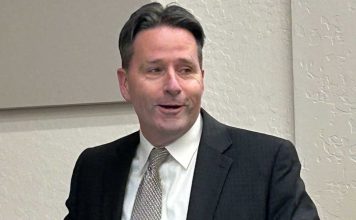It had been three weeks and two-hundred miles since we
shouldered our packs in Yosemite Valley. On fourteen of those
twenty-one days, we walked through rain and hail, sometimes
torrential. We had crossed ten of the eleven passes on the John
Muir Trail. The next day, my son Drew and I would haul our packs
over 14,496
‚ Mt. Whitney.
It had been three weeks and two-hundred miles since we shouldered our packs in Yosemite Valley. On fourteen of those twenty-one days, we walked through rain and hail, sometimes torrential. We had crossed ten of the eleven passes on the John Muir Trail. The next day, my son Drew and I would haul our packs over 14,496‚ Mt. Whitney.
If you have read my previous articles about earlier portions of this trip, you have heard me whine about the unusual weather we suffered. A summer monsoon system that comes to the desert Southwest had wandered off course and replaced the normally clear and dry summer Sierra weather with consistently rowdy weather. Finally, finally, we were enjoying fantastic weather.
But the fates seem dead set on monkey-wrenching things. As one overriding concern dissolved, another appeared. After crossing Forester Pass (13,200‚), we stopped at the first lake we reached. At Drew’s suggestion, we stopped to cook a little soup. My camp stove had been performing poorly, but until now, I had been able to cajole it into limping along. Now, it died.
As we had done during the foul weather, we considered the alternatives. What do you do when you have a pack full of dehydrated food, no stove, and you’re thirty miles from completing the trip? We had four more days planned. The side trip to climb Mt. Tyndall was scrubbed. We would make a mad dash for Mt. Whitney. We still had some nuts and dried fruit. We wouldn’t starve. Things would work out.
We packed up and began walking toward Mt. Whitney, still twenty miles away, with a new sense of urgency. At dusk, we reached Wallace Creek and caught a middle-aged couple who had been regular trail companions over the past several days. We asked if we could trade them some fuel in exchange for the use of their stove when they finished cooking their dinner. Salvation! Never has a hot meal, whatever the quality, been so appreciated.
The next morning we zigged and zagged up the endless back side of Mt. Whitney in silence, each with our own thoughts. I smiled at Drew’s excitement, energized by the imminent return to a soft mattress, a warm shower, fast food and friends. The trip’s effort had left some marks: Long beards, dark parchment-like skin, and a ten percent loss of weight. But it had also built power in our legs and lungs that we had never known and may never know again. Best of all, the intense light in Drew’s eye signaled a power and clarity that I had not seen in some time. By God, he’s in there.
Finally, there was no more climbing. We were there. We had done it. Through some surprising emotional release, tears came and I couldn’t stop them. Joy? Relief? I couldn’t tell. It just kept coming and frankly, it felt good.
That night, we began our reintroduction to life down below. In the cirque below Whitney, Trail Camp, at 12,000 feet‚ is the staging camp for weekend Whitney peak-baggers. It is surely the San Fernando Valley of the Sierras. Drew and I could barely disguise our disdain for the circus unfolding around us. Garishly logoed, high tech clothes adorned bright fresh bodies. People exchanged hearty congratulations for completing a measly six-mile unburdened day hike. An un-anchored freestanding tent blew through camp like a child’s lost balloon. Drew and I exchanged wordless condescending smiles. We’re the real backcountry travelers. You can tell by the smell.
Since our return, I blew up a photograph of Drew and I, seated with our arms around each other, on the summit of Mt Whitney. I framed it for Drew along with the backcountry permit from our trip. I did it so this kid, who didn’t think he could do it, will be reminded that he did. And he did it with style.












